 W
WBelow is a list of intervals expressible in terms of a prime limit, completed by a choice of intervals in various equal subdivisions of the octave or of other intervals.
 W
WA cappella music is a performance by a singer or a singing group without instrumental accompaniment, or a piece intended to be performed in this way. The term a cappella was originally intended to differentiate between Renaissance polyphony and Baroque concertato musical styles. In the 19th century, a renewed interest in Renaissance polyphony coupled with an ignorance of the fact that vocal parts were often doubled by instrumentalists led to the term coming to mean unaccompanied vocal music. The term is also used, rarely, as a synonym for alla breve.
 W
WAccentus is a style of church music that emphasizes spoken word. It is often contrasted with concentus, an alternative style that emphasizes harmony. The terms accentus and concentus were probably introduced by Andreas Ornithoparchus in his Musicae Activae Micrologus, Leipzig, 1517. "Concentus might be chief ruler over all things that are sung...and Accentus over all things that are read," according to Ornithoparchus. The style is also known as liturgical recitative, though it differs in some important ways from other types of recitative.
 W
WA big band remote was a remote broadcast, common on radio during the 1930s and 1940s, involving a coast-to-coast live transmission of a big band.
 W
WIn music, a blind octave is the alternate doubling above and below a successive scale or trill notes: "the passage being played...alternately in the higher and lower octave." According to Grove's Dictionary of Music and Musicians, the device is not to be introduced into the works of "older composers".
 W
WStreet performance or busking is the act of performing in public places for gratuities. In many countries the rewards are generally in the form of money but other gratuities such as food, drink or gifts may be given. Street performance is practiced all over the world and dates back to antiquity. People engaging in this practice are called street performers or buskers in the United Kingdom. Buskers is not a term generally used in American English.
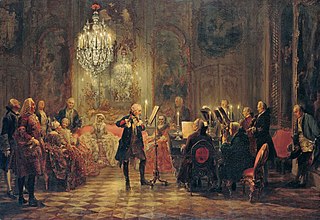 W
WChamber music is a form of classical music that is composed for a small group of instruments—traditionally a group that could fit in a palace chamber or a large room. Most broadly, it includes any art music that is performed by a small number of performers, with one performer to a part. However, by convention, it usually does not include solo instrument performances.
 W
WEmbouchure or lipping is the use of the lips, facial muscles, tongue, and teeth in playing a wind instrument. This includes shaping the lips to the mouthpiece of a woodwind instrument or the mouthpiece of a brass instrument. The word is of French origin and is related to the root bouche, 'mouth'. Proper embouchure allows instrumentalists to play their instrument at its full range with a full, clear tone and without strain or damage to their muscles.
 W
WA choral symphony is a musical composition for orchestra, choir, and sometimes solo vocalists that, in its internal workings and overall musical architecture, adheres broadly to symphonic musical form. The term "choral symphony" in this context was coined by Hector Berlioz when he described his Roméo et Juliette as such in his five-paragraph introduction to that work. The direct antecedent for the choral symphony is Ludwig van Beethoven's Ninth Symphony. Beethoven's Ninth incorporates part of the Ode an die Freude, a poem by Friedrich Schiller, with text sung by soloists and chorus in the last movement. It is the first example of a major composer's use of the human voice on the same level as instruments in a symphony.
 W
WA composer is a person who writes music, especially classical music in any form, including vocal music, instrumental music, electronic music, and music which combines multiple forms. A composer may create music in any music genre, including, for example, classical music, musical theatre, blues, folk music, jazz, and popular music. Composers often express their works in a written musical score using musical notation.
 W
WConducting is the art of directing a musical performance, such as an orchestral or choral concert. It has been defined as "the art of directing the simultaneous performance of several players or singers by the use of gesture." The primary duties of the conductor are to interpret the score in a way which reflects the specific indications in that score, set the tempo, ensure correct entries by ensemble members, and "shape" the phrasing where appropriate. Conductors communicate with their musicians primarily through hand gestures, usually with the aid of a baton, and may use other gestures or signals such as eye contact. A conductor usually supplements their direction with verbal instructions to their musicians in rehearsal.
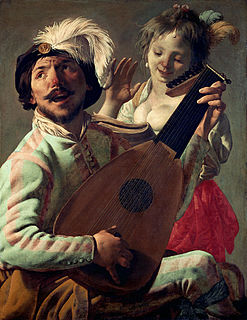 W
WA duet is a musical composition for two performers in which the performers have equal importance to the piece, often a composition involving two singers or two pianists. It differs from a harmony, as the performers take turns performing a solo section rather than performing simultaneously. A piece performed by two pianists performing together on the same piano is a "piano duet" or "piano four hands". A piece for two pianists performing together on separate pianos is a "piano duo".
 W
WDumka is a musical term introduced from the Ukrainian language, with cognates in other Slavic languages. The word "dumka" literally means "thought". Originally, it is the diminutive form of the Ukrainian term duma, pl. dumy, "a Slavic epic ballad … generally thoughtful or melancholic in character". Ukrainian and other Slavic classical composers drew on the harmonic patterns in the folk music of their countries to inform their more formal classical compositions.
 W
WEmbouchure or lipping is the use of the lips, facial muscles, tongue, and teeth in playing a wind instrument. This includes shaping the lips to the mouthpiece of a woodwind instrument or the mouthpiece of a brass instrument. The word is of French origin and is related to the root bouche, 'mouth'. Proper embouchure allows instrumentalists to play their instrument at its full range with a full, clear tone and without strain or damage to their muscles.
 W
WFigured bass, also called thoroughbass, is a kind of musical notation in which numerals and symbols indicate intervals, chords, and non-chord tones that a musician playing piano, harpsichord, organ, lute play in relation to the bass note that these numbers and symbols appear above or below. Figured bass is closely associated with basso continuo, a historically improvised accompaniment used in almost all genres of music in the Baroque period of Classical music, though rarely in modern music.
 W
WFrisson, also known as aesthetic chills or musical chills is a psychophysiological response to rewarding auditory and/or visual stimuli that often induces a pleasurable or otherwise positively-valenced affective state and transient paresthesia, sometimes along with piloerection and mydriasis. The sensation commonly occurs as a mildly to moderately pleasurable emotional response to music with skin tingling; piloerection and pupil dilation not necessarily occurring in all cases.
 W
WGig is slang for a live musical performance, a paid engagement of a musician or ensemble.
 W
WHarmonic analysis is a branch of mathematics concerned with the representation of functions or signals as the superposition of basic waves, and the study of and generalization of the notions of Fourier series and Fourier transforms. In the past two centuries, it has become a vast subject with applications in areas as diverse as number theory, representation theory, signal processing, quantum mechanics, tidal analysis and neuroscience.
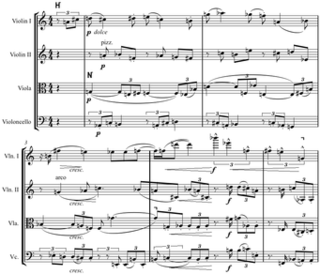 W
WIn music, Hauptstimme or Hauptsatz is the main voice, chief part; i.e., the contrapuntal or melodic line of primary importance, in opposition to Nebenstimme. Nebenstimme or Seitensatz is the secondary part; i.e., a secondary contrapuntal or melodic part, always occurring simultaneously with, and subsidiary to, the Hauptstimme. The practice of marking the primary voice within the musical score/parts was invented by Arnold Schoenberg.
 W
WIn scale (music) theory, a maximally even set (scale) is one in which every generic interval has either one or two consecutive integers specific intervals-in other words a scale whose notes (pcs) are "spread out as much as possible." This property was first described by John Clough and Jack Douthett. Clough and Douthett also introduced the maximally even algorithm. For a chromatic cardinality c and pc-set cardinality d a maximally even set is
 W
WThe millennial whoop is a vocal melodic pattern alternating between the fifth and third notes in a major scale, typically starting on the fifth, in the rhythm of straight 8th-notes, and often using the "wa" and "oh" syllables. It was used extensively in 2010s pop music.
 W
WMinnesang was a tradition of lyric- and song-writing in Germany and Austria that flourished in the Middle High German period. This period of medieval German literature began in the 12th century and continued into the 14th. People who wrote and performed Minnesang were known as Minnesänger, and a single song was called a Minnelied.
 W
WMusic manuscripts are handwritten sources of music. Generally speaking, they can be written on paper or parchment. If the manuscript contains the composer's handwriting it is called an autograph. Music manuscripts can contain musical notation as well as texts and images. There exists a wide variety of types from sketches and fragments, to compositional scores and presentation copies of musical works.
 W
WIn music, number refers to an individual song, dance, or instrumental piece which is part of a larger work of musical theatre, opera, or oratorio. It can also refer either to an individual song in a published collection or an individual song or dance in a performance of several unrelated musical pieces as in concerts and revues. Both meanings of the term have been used in American English since the second half of the 19th century.
 W
WOrchestration is the study or practice of writing music for an orchestra or of adapting music composed for another medium for an orchestra. Also called "instrumentation", orchestration is the assignment of different instruments to play the different parts of a musical work. For example, a work for solo piano could be adapted and orchestrated so that an orchestra could perform the piece, or a concert band piece could be orchestrated for a symphony orchestra.
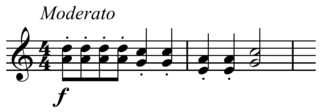 W
WThe Oriental riff, also known as the East Asian riff, is a musical riff or phrase that has often been used in Western culture as a trope or a stereotype of orientalism to represent the idea of China, Japan, Korea or a generic East Asian theme. It has also been used to represent generic Southeast Asian themes like those from Thailand, Vietnam, and Myanmar. The riff is sometimes accompanied by the sound of a gong.
 W
WAn epilogue or epilog is a piece of writing at the end of a work of literature, usually used to bring closure to the work. It is presented from the perspective of within the story. When the author steps in and speaks directly to the reader, that is more properly considered an afterword. The opposite is a prologue—a piece of writing at the beginning of a work of literature or drama, usually used to open the story and capture interest. Some genres, for example television programs and video games, call the epilogue an "outro" patterned on the use of "intro" for "introduction".
 W
WIn music theory, a phrase is a unit of musical meter that has a complete musical sense of its own, built from figures, motifs, and cells, and combining to form melodies, periods and larger sections.A phrase is a substantial musical thought, which ends with a musical punctuation called a cadence. Phrases are created in music through an interaction of melody, harmony, and rhythm.
 W
WIn music, a reduction is an arrangement or transcription of an existing score or composition in which complexity is lessened to make analysis, performance, or practice easier or clearer; the number of parts may be reduced or rhythm may be simplified, such as through the use of block chords.
 W
WA power trio is a rock and roll band format having a lineup of electric guitar, bass guitar and drum kit, leaving out the second rhythm guitar or keyboard instrument that are used in other rock music bands that are quartets and quintets. Larger rock bands use one or more additional rhythm section to fill out the sound with chords and harmony parts.
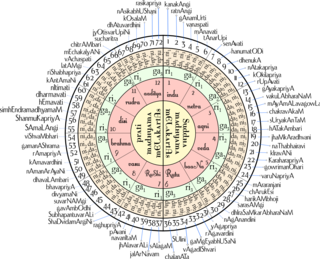 W
WA raga or raag is a melodic framework for improvisation akin to a melodic mode in Indian classical music. The rāga is a unique and central feature of the classical Indian music tradition, and as a result has no direct translation to concepts in classical European music. Each rāga is an array of melodic structures with musical motifs, considered in the Indian tradition to have the ability to "colour the mind" and affect the emotions of the audience.
 W
WA refrain is the line or lines that are repeated in music or in poetry — the "chorus" of a song. Poetic fixed forms that feature refrains include the villanelle, the virelay, and the sestina.
 W
WA round is a musical composition, a limited type of canon, in which a minimum of three voices sing exactly the same melody at the unison, but with each voice beginning at different times so that different parts of the melody coincide in the different voices, but nevertheless fit harmoniously together. It is one of the easiest forms of part singing, as only one line of melody need be learned by all parts, and is part of a popular musical tradition. They were particularly favoured in glee clubs, which combined amateur singing with regular drinking. The earliest known rounds date from 12th century Europe. One characteristic of rounds is that, "There is no fixed ending," in the sense that they may be repeated as many times as possible, although many do have "fixed" endings, often indicated by a fermata.
 W
WA set list, or most commonly setlist, is typically a handwritten or printed document created as an ordered list of songs, jokes, stories and other elements an artist intends to present during a specific performance.
 W
WSpruchdichtung or Sangspruchdichtung is the German term for a genre of Middle High German sung verse. An individual work in this genre is called a Spruch, literally a "saying", and may consist of one or more strophes.
 W
WA supergroup is a musical performing group whose members have successful solo careers, are members of other groups, or are well known in other musical professions. The term can sometimes also be applied to a group that has no specific preferred genre. The term is usually used in the context of rock and pop music, but it has occasionally been applied to other musical genres. For example, The Three Tenors—composed of opera superstars José Carreras, Plácido Domingo, and Luciano Pavarotti—have been called a supergroup.
 W
WSynthesia is a piano keyboard trainer for Microsoft Windows, IOS, macOS, and Android which allows users to play a MIDI keyboard or use a computer keyboard in time to a MIDI file by following on-screen directions, much in the style of Keyboard Mania or Guitar Hero. Additionally, Synthesia can be paired with MIDI keyboards that have illuminated keys, or with virtual player piano on screen, which some people believe makes learning piano easier for beginners. It was originally named Piano Hero, due to the similarity of gameplay with Guitar Hero; this was until Activision sent a cease and desist to the program's creator, Nicholas Piegdon.
 W
WTacet is Latin which translates literally into English as "(it) is silent". It is a musical term to indicate that an instrument or voice does not sound, also known as a rest. In vocal polyphony and in orchestral scores, it usually indicates a long period of time, typically an entire movement. In more modern music such as jazz, tacet tends to mark considerably shorter breaks. Multirests, or multiple-measure rests, are rests which last multiple measures.
 W
WIn music theory, Terzschritt is the progression from one major chord to another major chord, or a minor chord to another minor chord by major third root movement. Additionally, and more specifically, it is a dualistic major third relationship, in which the ascending progression from a major tonic triad to major mediant triad is equivalent to the descending one between a major tonic triad and a flat subdominant minor triad. The major chord on the mediant is itself the Terzklang.
 W
WThe 32-bar form, also known as the AABA song form, American popular song form and the ballad form, is a song structure commonly found in Tin Pan Alley songs and other American popular music, especially in the first half of the 20th century.
 W
WTutti is an Italian word literally meaning all or together and is used as a musical term, for the whole orchestra as opposed to the soloist. It is applied similarly to choral music, where the whole section or choir is called to sing. Music examination boards may instruct candidates to "play in tuttis", indicating that the candidate should play both the solo and the tutti sections.An orchestrator may specify that a section leader plays alone, while the rest of the section is silent for the duration of the solo passage, by writing solo in the music at the point where it begins and tutti at the point where the rest of the section should resume playing. In organ music, it indicates that the full organ should be used: all stops and all couplers. Some organ consoles offer a toe stud or piston to toggle the tutti: pressing once activates all stops, and pressing again reverts to the previous registration.
 W
WIn Schenkerian analysis, the fundamental structure describes the structure of a tonal work as it occurs at the most remote level and in the most abstract form. A basic elaboration of the tonic triad, it consists of the fundamental line accompanied by the bass arpeggiation. Hence the fundamental structure, like the fundamental line itself, takes one of three forms, according to which tonic triad pitch is the primary tone. The example hereby shows a fundamental structure in C major, with the fundamental line descending from scale degree :The Urlinie offers the unfurling (Auswicklung) of a basic triad, it presents tonality on horizontal paths. The tonal system, too, flow into these as well, a system intended to bring purposeful order into the world of chords through its selection of the harmonic degrees. The mediator between the horizontal formulation of tonality presented by the Urlinie and the vertical formulation presented by the harmonic degrees is voice leading.The upper voice of a fundamental structure, which is the fundamental line, utilizes the descending direction; the lower voice, which is the bass arpeggiation through the fifth, takes the ascending direction. [...] The combination of fundamental line and bass arpeggiation constitutes a unity. [...] Neither the fundamental line nor the bass arpeggiation can stand alone. Only when acting together, when unified in a contrapuntal structure, do they produce art.
 W
WThe Wall of Sound is a music production formula developed by American record producer Phil Spector at Gold Star Studios, in the 1960s, with assistance from engineer Larry Levine and the conglomerate of session musicians later known as "the Wrecking Crew". The intention was to exploit the possibilities of studio recording to create an unusually dense orchestral aesthetic that came across well through radios and jukeboxes of the era. Spector explained in 1964: "I was looking for a sound, a sound so strong that if the material was not the greatest, the sound would carry the record. It was a case of augmenting, augmenting. It all fit together like a jigsaw."
 W
WA white label record is a vinyl record with white labels attached. There are several variations each with a different purpose. Variations include test pressings, white label promos, and plain white labels.